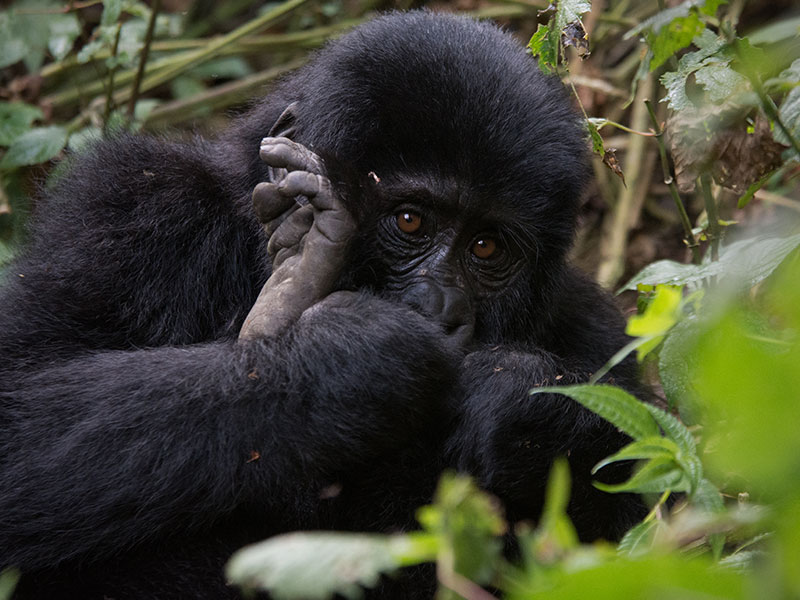- EXPERT'S HELP
- +256789210067
- +256200955001
- info@kenlinktours.com

Mount Elgon Hiking
November 17, 2023
Tourism Internship in Uganda
November 19, 2023How long does a silverback live for?
The lifespan of a silverback gorilla, which refers to the mature dominant male leader in a group of gorillas, can vary. On average, silverback gorillas live to be around 35-40 years old in the wild. However, they can potentially live longer in captivity, sometimes reaching into their 50s or even beyond, depending on the quality of care, access to medical attention, and other environmental factors.
Various factors can influence the lifespan of a silverback, including genetics, habitat conditions, availability of food, the presence of predators or threats, and the overall health of the individual. As they age, they may face health issues that could affect their longevity, much like other animals. It’s important to note that these are average estimates, and individual silverbacks may have different lifespans based on their circumstances.
Where can i see Gorillas in Africa ?
Gorillas can be found in two regions of Africa: the Virunga Massif and Bwindi Impenetrable Forest. Here are the specific locations where you can see gorillas in Africa:
- Virunga Massif (Democratic Republic of Congo, Rwanda, Uganda):
- Volcanoes National Park, Rwanda: This park is well-known for gorilla trekking experiences. It’s home to several habituated gorilla groups, and visitors can obtain permits to trek and observe these majestic animals.
- Bwindi Impenetrable National Park, Uganda: Located in southwestern Uganda, Bwindi is another popular destination for gorilla trekking. It’s home to several gorilla families available for tourist visits.
- Virunga National Park, Democratic Republic of Congo:
- This park is part of the Virunga Massif and offers gorilla trekking experiences. It’s one of the places where visitors can encounter mountain gorillas in their natural habitat.
- Mgahinga Gorilla National Park, Uganda:
- This park, situated in southwestern Uganda, is another destination for gorilla trekking. It’s part of the Virunga Massif and is home to the rare mountain gorillas.
To see gorillas in these areas, visitors typically need to obtain permits for gorilla trekking in advance. These permits are limited in number and need to be booked through the respective national park authorities or authorized tour operators. Gorilla trekking experiences usually involve guided hikes led by experienced trackers and guides to locate and observe habituated gorilla families in their natural habitat.
It’s essential to plan and book permits well in advance due to limited availability, especially during peak tourist seasons. Additionally, adherence to park regulations, conservation guidelines, and respecting the gorillas’ natural habitat are crucial for responsible and sustainable tourism practices when visiting these incredible animals.




